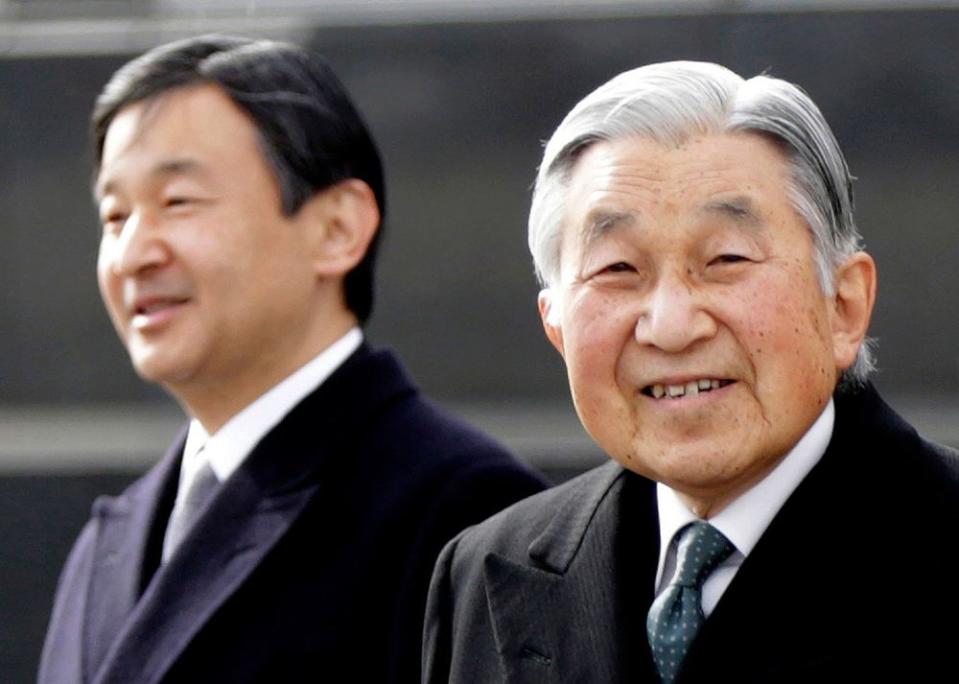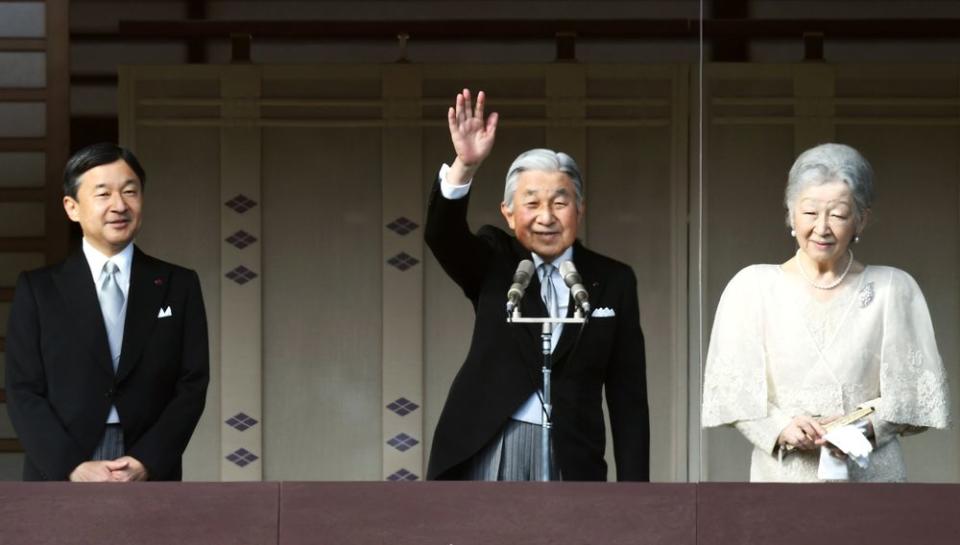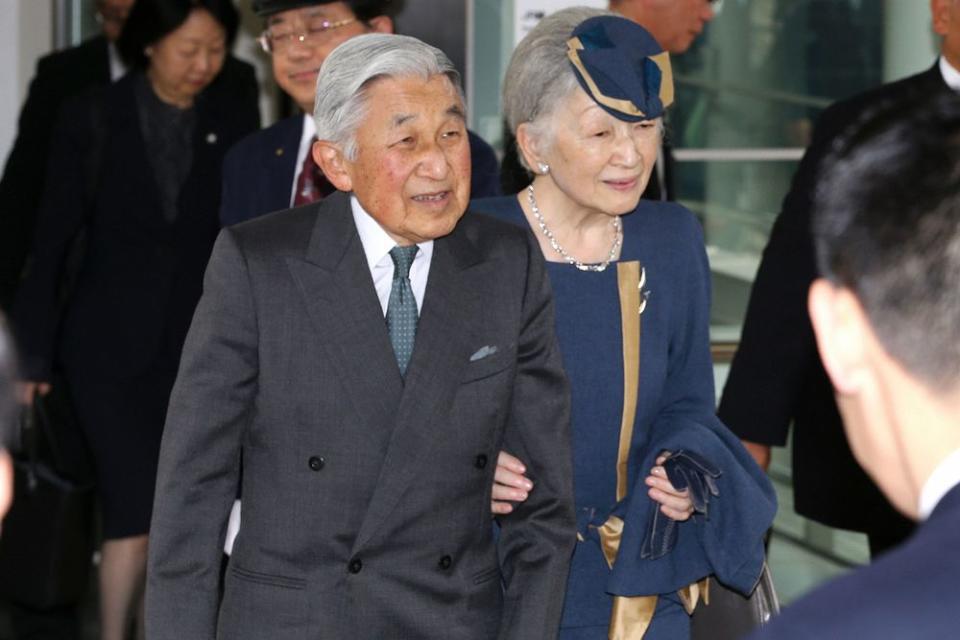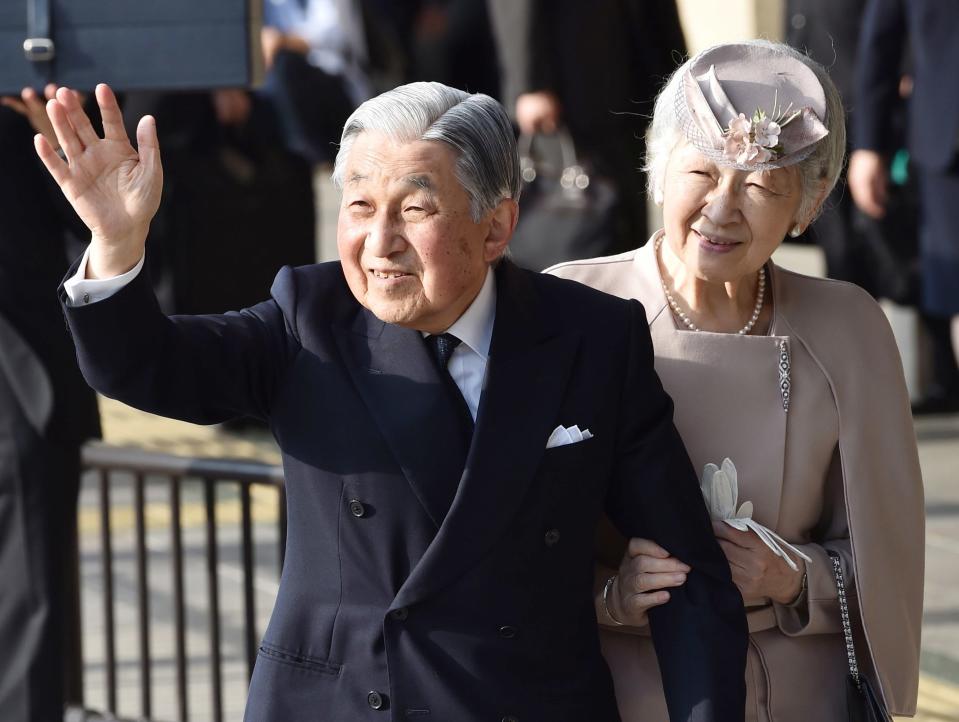Japan's Emperor Akihito, 85, Abdicates Throne as First Japanese Royal to Step Down in 200 Years
Japan’s Emperor Akihito is abdicating on Tuesday, making way for his son to take the throne.
Akihito, 85, announced his plan to step down due to health reasons in December 2017, marking the country’s first abdication in 200 years. His son, Crown Prince Naruhito, will begin his reign on May 1.
The abdication of a Japanese royal has not transpired since 1817. And while formal enthronement will not occur until October, this week’s ceremonies (the “kenji-to-shokei-no-gi”) are rooted much deeper in Japanese history.
After 30 years, Akihito’s reign will officially end at midnight on Wednesday after an abdication ceremony that will last just 10 minutes. The ceremony, the first of four occurring this week, incorporates the nation’s most significant relics: Japan’s “Three Sacred Treasures,” which are the symbols of the throne.

At 5:00 p.m. on Tuesday afternoon (local time), 300 invitees, the royal household Japan’s Prime Minister Shinzo Abe, Supreme Court justices and members of parliament will assemble for the abdication ceremony in the the Imperial Palace’s “Pine Room” (the Matsu-no-Ma).
As with Akihito’s accession in 1989, this ceremony will be broadcast.
Chamberlains will carry the State and Privy Seals into the room along with two of the three “sacred treasures” — a sword and a jewel. The sword (“Kusanagi no Tsurugi”) is actually a replica of one believed to be kept at the Nagoya Atsuta shrine. According to legend, it was given by a war god to Japan’s first Emperor Jinmu and in centuries past, the sword itself was worshipped as a god.
Both the wrapped sword and the unidentified jewel (“Yasakani no Magatama,” representing benevolence), which is kept in a coiffre, are held aloft during the ceremony. No one, not even the Emperor himself, is allowed to see them uncovered.
The third and perhaps most fascinating relic is the holy mirror. Legend says the “Yata no Kagami” holds the soul of the Sun Goddess Amaterasu. Never removed from its place in Japan’s highest Shinto shrine near Ise, where it was taken 1500 years ago, the mirror’s role is symbolic only and in its absence, a prayer is offered at the ceremonies.
The three treasures are the essential royal regalia and proof of the emperor’s legitimate claim to the Chrysanthemum Throne. Historically, their value and significance is such that in the very last weeks of World War II, wartime Emperor Hirohito was so greatly concerned with their security that court documents suggest he considered moving the sword and mirror closer to himself so he could defend them with his own life, if necessary.

During the ten-minute abdication ceremony, Prime Minister Abe will make a formal announcement and Akihito will give his final address as Emperor, though he retains his title until midnight when transition from the Heisei (“peace-making”) era to the newly named Reiwa era (“beautiful harmony”) begins.
On Wednesday at 10:30 a.m., Naruhito will participate in the kenjito-shokei-no-gi ceremony, a traditionally males-only ritual marking inheritance of the regalia. This week’s investment, however, will break with all precedence as Satsuki Katayama, 60, Minister of Gender Equality and the only woman in the current government cabinet will be in attendance to see chamberlains present the new Emperor with the seals, sword, jewels and magatama (beads) symbolic of his succession.
At 11 a.m. on Wednesday, the new Emperor is scheduled to make his first remarks from the palace in the Sokui-go-Choken-no-gi ceremony. Traditionally, these are brief comments, indicating goals the Emperor hopes to pursue during his reign. New Empress Masako will attend these remarks as well as members of the government and their wives and spouses.
On Saturday, May 4, the new Emperor will greet the crowd from the balcony of the palace. There are six balcony waves scheduled to accommodate public demand. In 1990, over 100,000 people filled the palace courtyard attending these appearances.
During all these events, members of the imperial family will be dressed in western style dress — often swallow-tail coats and long dresses.

In the fall, Emperor Naruhito and Empress Masako will adopt traditional Japanese clothing for the Sokui-no-Rei, the royal enthronement, an equally elaborate series of ceremonies scheduled to conclude on October 22. This enthronement ceremony, during which the Emperor sits briefly on a tatami throne inside the Takamikura a 20 foot high pavilion, will have 2,500 invitees from Japan and abroad, including foreign royalty (Prince Charles and Princess Diana attended in 1990) as well as heads of state, followed by a public parade through central Tokyo.
The Japanese imperial family is steeped in tradition, so much that women in the family who decide to marry commoners lose their royal status. The Emperor’s only daughter, Sayako Kuroda, formerly Princess Sayako, left the family in 2005.
Despite having eight empresses throughout their history, Japan currently does not allow women to have a place in the line of succession. Instead, the throne will be passed to the next closest male relative.
Nahurito only has one child, a daughter: Princess Aiko. So when Nahurito dies (or abdicates, though Akihito’s decision to do so is very rare), the throne will pass to his younger brother, Prince Fumihito — the father of Princess Mako. Fumihito has a son, Hisahito, who is set to inherit after him, but Hisahito is the only male of his generation in the family.



